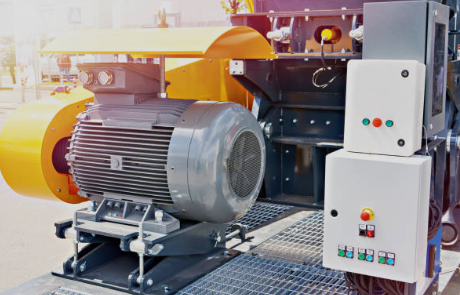Introduction
When it comes to powering heavy-duty machinery and equipment, three-phase motors are widely used in various industries. These motors offer high efficiency, reliability, and better performance compared to single-phase motors. In this comprehensive guide, we will explore the different aspects of three-phase motors, including their working principle, types, applications, and maintenance tips. Whether you are a professional in the field or a curious enthusiast, this article will provide you with valuable insights into the world of three-phase motors.
Understanding Three Phase Motors
Before diving into the details, let's start by understanding the basics of three-phase motors. A three-phase motor is a type of electric motor that operates on a three-phase power supply system. Unlike single-phase motors, which rely on a single alternating current (AC) waveform, three-phase motors utilize three separate AC waveforms, each out of phase with the other by 120 degrees. This arrangement allows for a smoother and more balanced power delivery, resulting in improved motor performance and efficiency.
The Working Principle of Three Phase Motors
Three-phase motors operate based on the principle of electromagnetic induction. When an electric current flows through the motor's stator windings, a rotating magnetic field is generated. This magnetic field interacts with the rotor, which is either a squirrel cage or wound rotor, causing it to rotate. The rotation of the rotor enables the motor to convert electrical energy into mechanical energy, powering various industrial applications.
Types of Three Phase Motors
There are several types of three-phase motors available, each designed for specific applications and operating conditions. The most common types include:
1. Induction Motors
Induction motors are the most widely used type of three-phase motors due to their simplicity, reliability, and cost-effectiveness. They are commonly found in industrial settings and are ideal for driving pumps, fans, compressors, and conveyor systems.
2. Synchronous Motors
Synchronous motors are known for their constant speed and precise control. These motors are commonly used in applications that require high precision, such as robotics, CNC machines, and synchronous generators.
3. Brushless DC Motors
Brushless DC motors, also known as electronically commutated motors, offer high efficiency and excellent speed control. They are widely used in applications such as electric vehicles, industrial automation, and HVAC systems.
Applications of Three Phase Motors
Three-phase motors find applications across various industries due to their reliability and versatility. Some common applications include:
1. Manufacturing Industry
Three-phase motors play a crucial role in the manufacturing industry, powering conveyor belts, assembly lines, and other heavy machinery. They provide the necessary torque and power to ensure smooth and efficient production processes.
2. HVAC Systems
Heating, ventilation, and air conditioning (HVAC) systems rely on three-phase motors to drive fans, compressors, and pumps. These motors ensure optimal air circulation, temperature control, and energy efficiency in commercial and residential buildings.
3. Water Treatment Plants
Water treatment plants utilize three-phase motors to operate pumps, agitators, and blowers for various processes, including filtration, disinfection, and wastewater treatment. These motors ensure reliable and efficient operation of the entire water treatment system.
4. Renewable Energy
Three-phase motors are also employed in renewable energy systems such as wind turbines and hydroelectric generators. They convert the rotational energy from wind or water into electrical energy, contributing to the sustainable production of power.
Maintenance Tips for Three Phase Motors
To ensure the longevity and optimal performance of three-phase motors, regular maintenance is essential. Here are some crucial maintenance tips:
1. Regular Inspection
Inspect the motor's components, including the stator windings, rotor, bearings, and connections, for any signs of wear, damage, or overheating. Address any issues promptly to prevent further damage.
2. Lubrication
Proper lubrication of the motor's bearings is crucial to minimize friction and ensure smooth operation. Follow the manufacturer's recommendations for the appropriate lubricant and schedule regular lubrication intervals.
3. Cleaning
Keep the motor clean and free from dust, debris, and contaminants. Regularly clean the motor's exterior and ensure proper ventilation to prevent overheating.
4. Electrical Connections
Periodically check the motor's electrical connections to ensure they are secure and free from corrosion. Loose or faulty connections can lead to voltage drops, excessive heat, and motor failure.
5. Overload Protection
Install appropriate overload protection devices, such as thermal overload relays or motor protection circuit breakers, to prevent motor damage due to excessive current or voltage fluctuations.
Conclusion
Three-phase motors are the workhorses of various industries, providing efficient and reliable power for numerous applications. Understanding the working principle, types, applications, and maintenance tips of these motors is essential for anyone involved in the field of electromechanical systems. By following proper maintenance practices and choosing the right type of three-phase motor for specific applications, businesses can maximize productivity and minimize downtime. So, whether you are an engineer, technician, or simply curious about how things work, this comprehensive guide has equipped you with valuable knowledge about three-phase motors.
